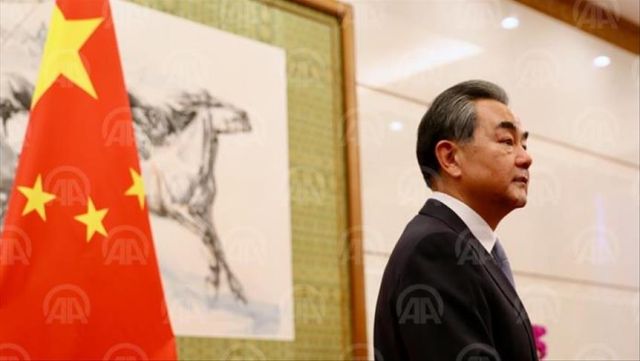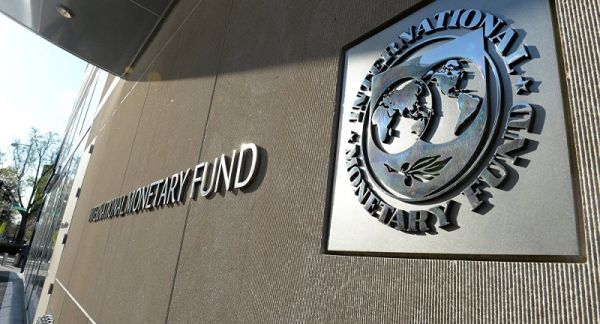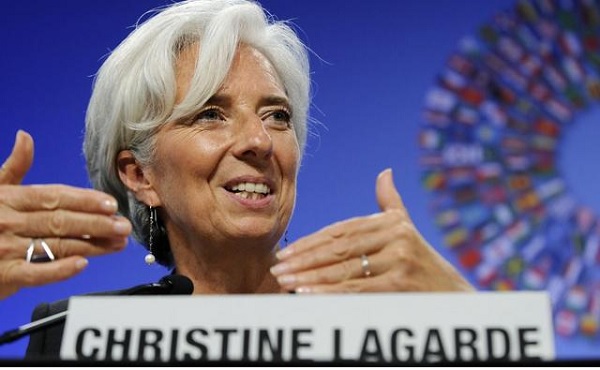
by admin | May 25, 2021 | World

Chinese Foreign Minister Wang Yi
New York : Chinese Foreign Minister Wang Yi met Managing Director of the International Monetary Fund (IMF) Christine Lagarde here, exchanging views on multilateralism and reform of the World Trade Organization (WTO).
During the talks on Wednesday, Wang emphasized China’s stance in upholding multilateralism, free trade and international rules and law, reports Xinhua news agency.
Wang also called for increased international efforts to safeguard multilateralism.
Echoing Wang’s views, Lagarde said it was one of IMF’s principles to advocate multilateralism and international trade.
The international community should firmly protect multilateral trading system and abide by rules and regulations in international trade while addressing disputes through consultations, she said.
When discussing issues on the reform of WTO, Wang proposed the reform should be transparent, open and inclusive, since it is related to interests of all its members.
Opinions of all WTO members, especially the developing countries, should be considered, said Wang, noting that the global trade body plays a vital role in the development of international trade.
—IANS

by admin | May 25, 2021 | Economy, Markets, News, World
 By Arul Louis,
By Arul Louis,
United Nations : The International Monetary Fund (IMF) cut India’s growth projections for this fiscal year to 7.3 per cent and for the next to 7.5 per cent on Monday, although the country will still retain its top spot in the global growth league.
But “India’s growth remains quite robust into the future; it is down but growing very strongly”, said Maury Obstfeld, the director of the IMF’s Research Department.
The World Economic Outlook (WEO) Update reduced by 0.1 per cent the projections made in April for this year and by 0.3 per cent for 2019.
At the news conference to release the report in Washington, Obstfeld explained the downgrade by saying that while the main factor is the rise in oil prices, “the general tightening in general global financial conditions is (also) playing a role in affecting India’s growth”.
Gian Maria Milesi-Ferreti, the deputy director of the Research Department, added that another element that went into the downgrade was “the rising inflationary pressures”.
“Monetary policy has tightened; it’s a bit tighter than under our forecast in April and that adds to oil and tighter global financial conditions in taking a little bit off growth for next year,” he said.
Obstfeld said that although some factors have negatively impacted the global growth since April, they were not significant enough to reduce the projection.
“We continue to project global growth rates of just about 3.9 per cent for both this year and next, but judge that the risk of worse outcomes has increased, even for the near term,” he said.
The report said that for such a scenario the “possible triggers include rising trade tensions and conflicts, geopolitical concerns, and mounting political uncertainty”.
Citing the tariff increases by the US and retaliation by other countries, it said they “could derail the recovery and depress medium-term growth prospects”.
The Update kept the growth projections for China unchanged at 6.6 per cent for this year and 6.4 for 2019, and for the US at 2.9 per cent for 2018 and 2.7 per cent next year.
But for the Euro zone, it cut the growth projections by 0.2 per cent to 2.2 per cent for this year and by 0.1 per cent to 1.9 per cent for next year.
Obstfeld said: “The dollar has already appreciated broadly since April, and financial conditions facing emerging and frontier economies have become somewhat more restrictive.”
The Update said the dollar has appreciated by 5 per cent since February.
As for reducing the projections for India, it said they reflect the “negative effects of higher oil prices on domestic demand and faster than-anticipated monetary policy tightening due to higher expected inflation.”
The latest projections are still markedly higher than the growth rate of 6.7 per cent in 2017 and the report said it was because “drags from the currency exchange initiative and the introduction of the goods and services tax fade”.
The IMF Update is in line with the World Bank’s Global Economics Prospects projections issued last month.
However, the IMF numbers are lower than the United Nations growth estimate of 7.5 per cent for this year and 7.6 per cent for the next year made in May in the World Economic Situation and Prospects.
(Arul Louis can be reached at arul.l@ians.in)
—IANS

by admin | May 25, 2021 | World

Christine Lagarde
Dublin : The EU should enhance its regulatory and supervisory capacities to cope with the possible influx of financial firms from London to continental Europe after Britain leaves the European Union, IMF Managing Director Christine Lagarde has said.
The International Monetary Fund made the remarks on Monday while delivering an opening speech at a two-day international conference held in Dublin to mark the upcoming 20th anniversary of euro, which was first introduced to world financial markets as an accounting currency on January 1, 1999, Xinhua reported.
She said that after Brexit, many financial firms are expected to relocate outside Britain if they lose their passporting rights, a right which allows a financial company authorized in one EU state to sell services and products in another.
“In the near term, it is critical to ensure that regulatory and supervisory capacities are prepared for the influx of financial firms that will move to continental Europe and Ireland as a result of Brexit,” she said.
The IMF chief told the participants at the meeting that “we meet at a moment when the EU and euro area are in the midst of difficult decisions about their future. Populist movements, from Brexit to the recent Italian elections, have called into question of the value of European integration.”
She said that it has been a complicated journey full of difficult moments for the euro area over the last decades or so.
“At age 20, the euro area is more mature. Battle scarred, yes, but also stronger and ready to move forward,” she said, adding that work was needed to enhance the euro area’s resilience and secure its future.
“The euro area needs truly integrated financial and capital markets that allow companies to raise financing across borders more easily and support investment,” she noted.
Lagarde also held a meeting with the Irish Prime Minister Leo Varadkar on Monday, during which she called Ireland to be prudent and plan for international economic shocks.
She said that the current employment rate and growth of the Irish economy is remarkable compared with the time when she first visited Ireland in 2013. However, she said the time to fix the roof is when the sun is shining, calling on the Irish government to set up a rainy day fund in case of next economic downturn.
—IANS

by admin | May 25, 2021 | Economy, Markets, News
 By Arul Louis,
By Arul Louis,
United Nations : The International Monetary Fund (IMF) reaffirmed on Wednesday that India will be the fastest growing major economy in 2018, with a growth rate of 7.4 per cent that rises to 7.8 per cent in 2019 with medium-term prospects remaining positive.
The IMF’s Asia and Pacific Regional Economic Outlook report said that India was recovering from the effects of demonetisation and the introduction of the Goods and Services Tax and “the recovery is expected to be underpinned by a rebound from transitory shocks as well as robust private consumption.”
Medium-term consumer price index inflation “is forecast to remain within but closer to the upper bound of the Reserve Bank of India’s inflation-targeting banda of four per cent with a plus or minus two per cent change, the report said.
However, it added a note of caution: “In India, given increased inflation pressure, monetary policy should maintain a tightening bias.”
It said the consumer price increase in 2017 was 3.6 per cent and projected it to be five per cent in 2018 and 2019.
“The current account deficit in fiscal year 2017-18 is expected to widen somewhat but should remain modest, financed by robust foreign direct investment inflows,” the report said.
After India, Bangladesh is projected to be the fastest-growing economy in South Asia with growth rates of seven per cent for 2018 and 2019; Sri Lanka is projected to grow at four per cent in 2018 and 4.5 in 2019, and Nepal five per cent in 2018 and four per cent in next. (Pakistan, which is grouped with the Middle East, is not covered in the Asia report.)
Overall, the report said that Asia continues to be both the fastest-growing region in the world and the main engine of the world’s economy.
The region contributes more than 60 per cent of global growth and three-quarters of this comes from India and China, which is expected to grow 6.6 per cent in 2018 and 6.4 per cent in 2019, it said.
The report said that US President Donald Trump’s fiscal stimulus is expected to support Asia’s exports and investment.
The Asian region’s growth rate was expected to be 5.6 per cent for 2018 and 2019.
However, in the medium term the report said that “downside risks dominate” for the region and these include a tightening of global financial conditions, a shift toward protectionist policies, and an increase in geopolitical tensions.
Because of these uncertainties the IMF urged the countries in the region to follow conservative policies “aimed at building buffers and increasing resilience” and push ahead with structural reforms.
“While mobile payments are expanding sharply in such economies as Bangladesh, India, and the Philippines, on average Asia is lagging sub-Saharan Africa,” the IMF said, adding that the region should take steps to ensure it is able to reap the full benefits of increasing digitalisation in the global economy.
(Arul Louis can be reached at arul.l@ians.in)
—IANS

by admin | May 25, 2021 | Opinions
 By Amit Kapoor,
By Amit Kapoor,
Any undergraduate student of economics would vouch for the fact that an economy in a recession requires a fiscal stimulus package (or more government spending and lower taxes). Such a stimulus can only be managed if the economy constrains its fiscal spending in times of growth. Restraint on spending in good times would allow the creation of a buffer for a strong fiscal policy response in the event of a downturn. This Keynesian prescription of counter-cyclical fiscal policy is expected to stabilise output of an economy over business cycle dynamics.
The world economy today, however, is on a problematic course. The International Monetary Fund (IMF) pointed out last week that the global debt levels have reached historical highs. In 2016, the global debt stood at $164 trillion, which was equivalent to 225 percent of global GDP. The current levels of global debt-to-GDP ratio are a whole 12 percentage points higher than the previous peak of 2009 when the governments were on a deficit spending spree in the aftermath of the global financial crisis.
Also, it turns out that countries in all income groups have accumulated massive amounts of debt. In advanced countries, the debt-to-GDP ratios have hit levels not seen since World War II, while the emerging markets and middle-income countries are at levels last seen during the 1980s debt crisis. The current debt situation has been a result of the prolonged after-effects of the 2008 financial crisis, which have only recently worn off.
Excess liquidity is generated in a system when the economic growth rate is lower than the amount of money circulating in the economy. When banks have more money in their reserves than required, they resort to lending at lower interest rates. These low interest rates encourage higher borrowing by governments, individuals and corporates. Over the last few years, since the world was in a low-growth phase and interest rates were at rock bottom, debt was continually rising.
Meanwhile, the US economy, which had to resort to a similar low-interest phase, is continuing to strain its fiscal situation. Despite having massive spending obligations in the form of entitlement programmes, the Trump administration opted for generous tax cuts with no commensurate revenue generating plan. The expansionary fiscal policy has come at a time when the US economy is at its strongest in a decade. The fiscal deficit is expected to reach $1 trillion soon.
China is in a more precarious situation. The country has moved from being a low-leverage country in 2007 to having a debt position that is currently worse than the US. In a bid to sustain its growth story, the Chinese government authorised a decade-long debt explosion. Even though most of its debt has been accumulated by the corporate sector, a large part of it has been incurred by state-owned enterprises backed by central and local governments. So, the state has played an enabling role in inculcating the behaviour of unrestrained borrowing.
Now that the world economy is finally on a cyclical upswing, the escalating debt addiction needs to come to an end and fiscal buffers should be strengthened to reduce the risk of financial difficulties in case global financial conditions tighten suddenly.
The necessity of winding down debt levels right away has been shown in a paper published last year by David Romer and Christina Romer. After analysing 24 economies, the two economists convincingly showed that if a country has both fiscal and monetary space in time of a crisis, the economy’s output contracted by less than 1 percent. However, if that was not the case, the output declines by about 10 percent. Therefore, it is absolutely vital that the world economies begin to work towards enhancing their resilience.
Against this backdrop, the focus of the Indian government on the practice of fiscal restraint seems to be on the right track. The N.K. Singh Committee had recommended a combined debt-to-GDP ratio of 60 percent by 2022-23 and the IMF estimates that India will definitely miss the target but would be close enough. The only cause of concern is the deteriorating condition of state finances.
The Fourteenth Finance Commission had recommended anchoring the fiscal deficit of the states to 3 percent of the GSDP between 2015-16 and 2019-20. However, the states have not been able to achieve the target till date. The breaching of targets is not worrying if borrowing is undertaken to fund productive activities like improving infrastructure. But, Indian states are neck deep in debt only due to pandering to populist sentiments.
If the government efforts to synchronise general and state elections materialise, the fiscal deficit will take an even further hit. It would be in the best interest of the economy if such short-term political temptations are avoided. India should aim at building up its fiscal resilience while the economic situation is strong.
(Amit Kapoor is chair, Institute for Competitiveness. He can be contacted at amit.kapoor@competitiveness.in and tweets @kautiliya. Chirag Yadav, senior researcher, Institute for Competitiveness, has contributed to the article)
—IANS




